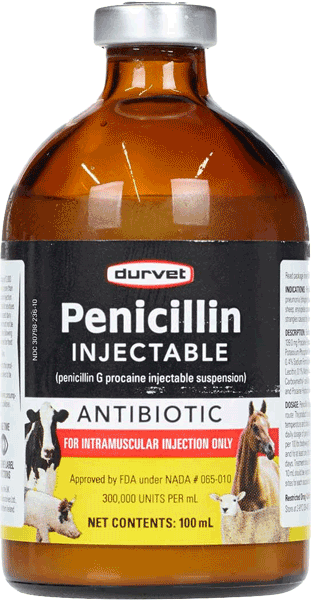
How Prevalent is Drug Use in Equine Reproduction?
An interesting retrospective study on drug use in equine reproduction that looks at a wide variety of drugs being used in breeding and pregnancy situations on seven Irish and UK Thoroughbred breeding farms has been published (Descriptive Study of Medication Usage and Occurrence of Mouncey R, Arango-Sabogal JC, de Mestre A, Verheyen K. 2022. Disease and Injury During Gestation in Thoroughbred Broodmares. JEVS 118). It discusses routine treatments related to the breeding process, as well as routine and extraordinary treatments given during pregnancy.
 Today, there is increasing concern about over- and/or inappropriate use of antibiotics leading to increased prevalence of antibiotic resistance (we reviewed steps that are being taken in the US with the AVMA’s January 2022 announcement about restricting antibiotic access). This resistance it is important to note does not remain in the genre in which it is created, and treatment in a manner which creates antibiotic-resistance pathogens in mares will result in those same pathogens creating significant issues for human medicine. We all therefore need to be conscious of suitable and proper usage of what has become regarded as a “routine” medicine.
Today, there is increasing concern about over- and/or inappropriate use of antibiotics leading to increased prevalence of antibiotic resistance (we reviewed steps that are being taken in the US with the AVMA’s January 2022 announcement about restricting antibiotic access). This resistance it is important to note does not remain in the genre in which it is created, and treatment in a manner which creates antibiotic-resistance pathogens in mares will result in those same pathogens creating significant issues for human medicine. We all therefore need to be conscious of suitable and proper usage of what has become regarded as a “routine” medicine.
In this review, antibiotics were utilized in 69% (n = 75/109, 95% CI 60–77) of post-covering treatments and 47% (n = 95/203, 95% CI 40–54) of mares received antibiotics (25%, n = 51/203, 95% CI 20–31) during gestation. The obvious implication here is that in the vast majority of those cases, such usage would have been unnecessary and unlikely to have impacted pregnancy rates. The paper observes that such usage is “raising yet further questions about therapeutic rationale, when available evidence suggests that the prevalence of bacterial post-covering endometritis in Thoroughbred broodmares is low”. In part because such post-breeding treatments have in the past been considered “routine”, the attending veterinarian is in many cases caught in a trap, because if they refuse to perform an unnecessary treatment of this manner and the mare does not become pregnant, clearly it is the vet’s fault!
Another area where the veterinarian is often caught in the same trap – or feels the need to “do something” with a mare which is failing to become pregnant in the absence of a diagnosed issue – is the use of progestin supplementation (i.e. Regumate et. al.) to allegedly “support the pregnancy”. This topic has been discussed many times in this group as well as elsewhere, but the practice still continues to be widely used as routine. Dr. Carleigh Fedorka has written expansively and effectively in the EquineRepro Facebook Group on the subject, encouraging us to reconsider whether such drug use in equine reproduction is the benign panacea it was once thought to be, as increasingly there are suggestions of implications other than positive.
This paper observes: “It was interesting to note in the present study that the majority of pregnancies reported to have received medication with no history of veterinary intervention were given altrenogest. Altrenogest is commonly prescribed off-licence to prevent pregnancy failure in the treatment of conditions such as placentitis. Therefore, it could be speculated that mares receiving altrenogest with no record of disease or injury, may have had either a previous history or perhaps even findings suggestive of sub-clinical placentitis at routine examination. Findings from this study therefore support the need for further work to evaluate both the incidence of placentitis and the use of altrenogest during gestation in Thoroughbred broodmares.”
From the statistics, 14.8% of pregnant mares received altrenogest, but only 4.9% of mares were identified as having placentitis. It is worth noting that both altrenogest usage and placentitis prevalence are seen to be much higher in North America.


